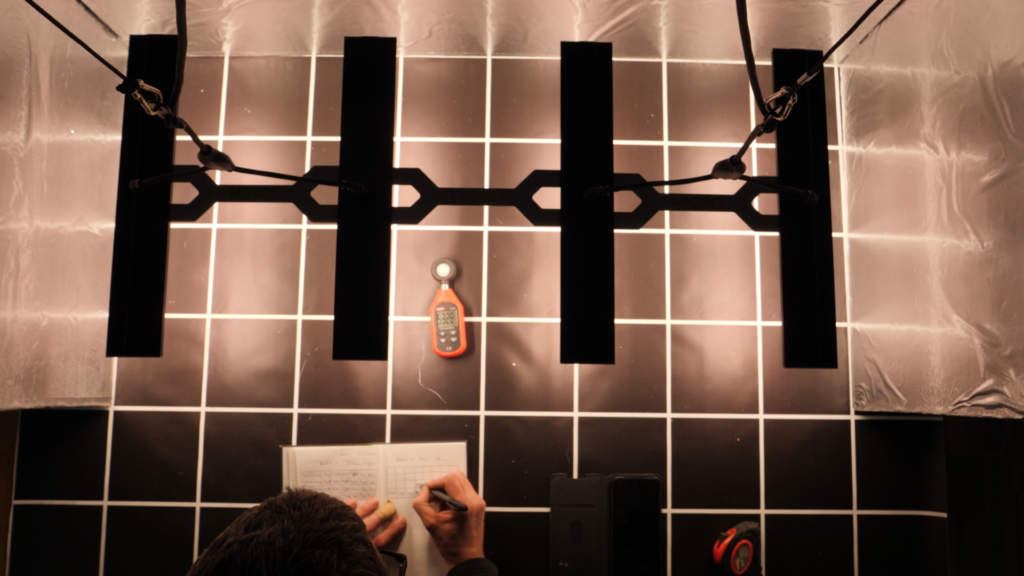Use your phone to measure PAR and setup your grow light
Use this simple and cheap method to calculate the optimum hanging height for any grow light in any space without expensive tools or specialist equipment.
You can use a free PAR meter App or a cheap lux meter to measure the PAR (Photosynthetically Active Radiation, the light that causes photosynthesis and growth) across your grow area.
See our test of the two best PAR meter apps here
Make a PAR map of your grow area
Here are the steps to map out the PAR intensity across your grow area and calculate the average PAR and uniformity (how well the light is spread).
The first step is to hang the grow light at the height the manufacturer recommends or where you think it is probably the best setting taking care of the following:
- Run the light for 30 minutes to warm it up.
- Level the light fixture
- Adjust to maximum power setting
- Use a dark surface which does not reflect much light so you do not get false readings from reflected light
- Divide the area into squares - I suggest 15cm or 6" squares (you can go smaller for more accuracy or larger but it will be less accurate)

The next step is to use a lux meter or PAR meter to measure the intensity in each square and make a chart with the numbers in each square (using a spreadsheet is ideal but you can also use pen and paper).
Find out how to calibrate a cheap Amazon Lux meter to a PAR meter here: https://youtu.be/T8vvu2unNpQ
Or use the an iPhone and the IOS app, Photone for accurate PAR readings, link here: https://youtu.be/K3grFZs8spc
You can then calculate the average light intensity or PAR (if you use the lux meter calibration or Photone App) with the following calculation:

Repeat the test at lower and higher hanging heights for comparison
Then take the readings again with the light lower and higher for comparison. This is trial and error but I would suggest lowering and raising in the same increments i.e. 10cm or 4" each time.
You will then be able to compare the average and total light intensity reaching the plant canopy and also determine the most uniform or even spread (please note this example did not have reflective walls on the nearest side and the light intensity is lower, this was to enable filming of the process).

You can clearly see the total amount of light increases as the fixture is lowered. The increase in lowering just 10cm or 5" is nearly 10%!!
This would equate to a yield increase of 10% also. However lowering too much will result in hot spots (readings over 1,000 µmols/m²/sec) and less even coverage, particularly in the corners.
Calculate the grow light system efficiency
By taking a reading of the power consumed by the light fixture you can also calculate the efficiency of the setup. First calculate the total PAR by multiplying the average PAR x the area in sq. meters. Then divide the total par by the power consumed to get the total efficacy of the lighting setup.

Using this method you can now map out the light spread for any light in any space and optimise the setup by adjusting the grow light to the perfect height.
















1 thought on “How to make a grow light par map with your phone”
Stian Lamey
Awesome products and prices and info!!